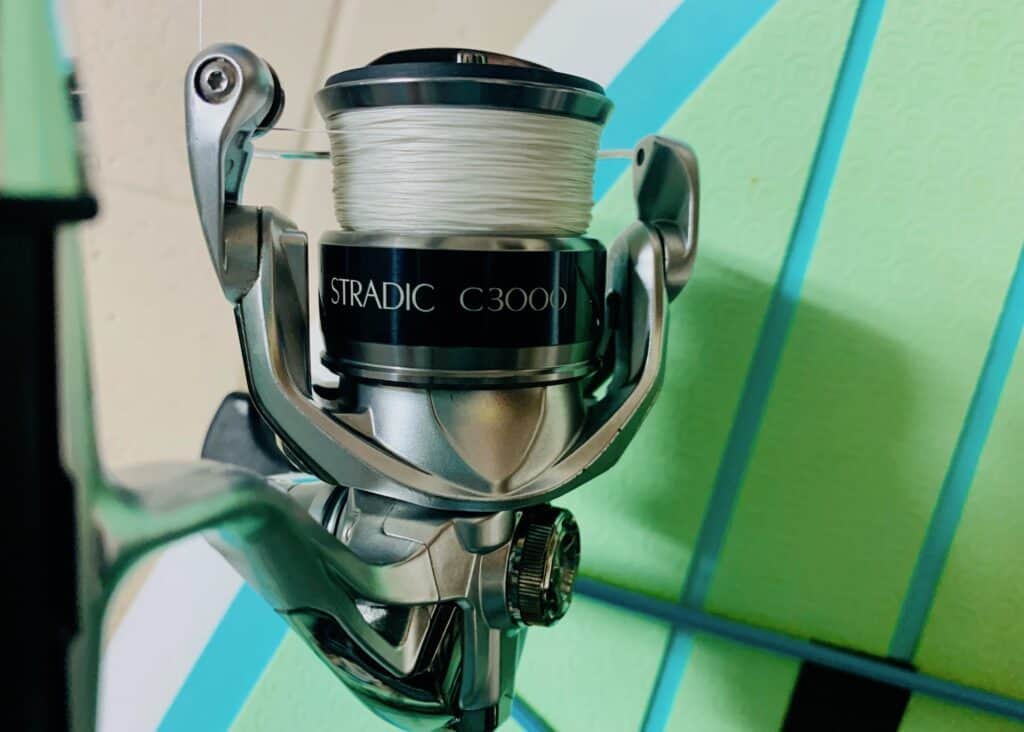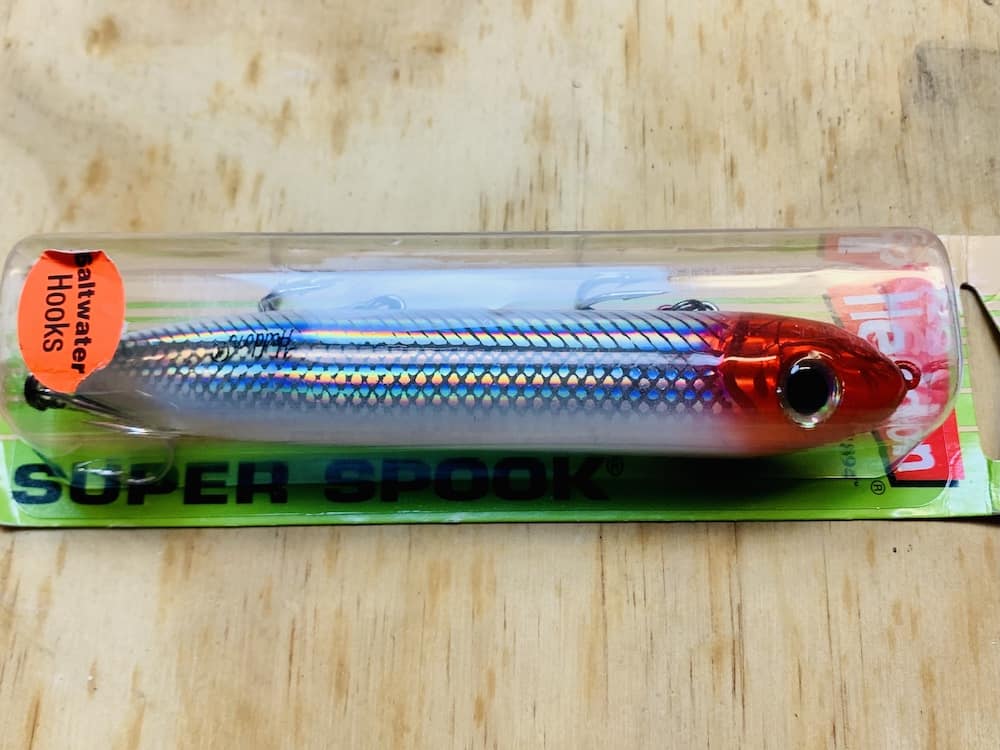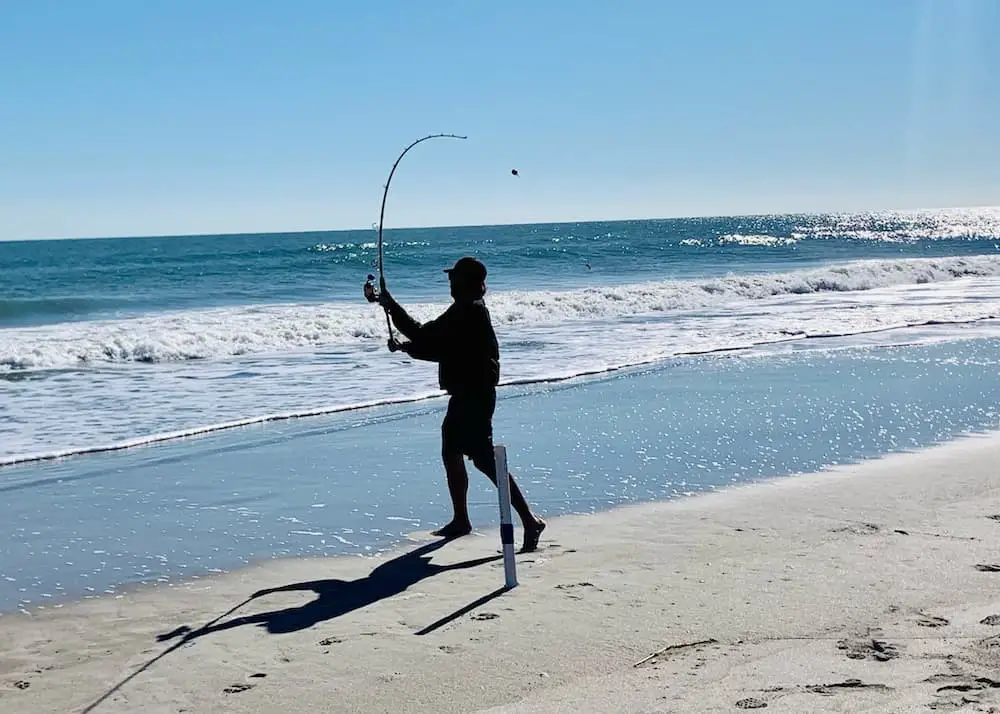Surf fishing is an excellent way to get some time out on the water; everyone enjoys the experience of the thrill of feeling a fish hit your bait and spending time at the ocean. You can make surf fishing as relaxed or involved as you want—be active and cast and retrieve all day, or you throw out your lure, and put your rod in a holder, sit back, relax and wait for the fish to bite. Either way, just getting out in the elements, even if it’s for only your lunch break, is a welcome change from your routine. So, what happens when you get to the water’s edge, and it’s low tide, which isn’t purported to be the best time to surf fish, can you still toss your line out?
Generally, the best time of the day to surf fish is two hours before high tide and an hour after high tide. However, this doesn’t mean you shouldn’t try to surf fish at other times, even during low tides. You can surf fish during a low tide; you just need to be aware of a few things to be successful.
Ultimately, successful surf fishing requires a broad knowledge of factors that affect surf fishing conditions like the phase of the moon, tide, current, wind, weather condition, time of the day, and the time of year. Given all these considerations, let’s look at the question, “Is low tide a good time to surf fish?”
So, Can You Surf Fish at Low Tide?
For many of us, getting out at the shoreline to surf fish right around high tide isn’t always practical or doable, and if we followed this “rule of thumb,” we wouldn’t have much of a chance to get out there in the surf and fish. So, throwing out a line at or around low tide might be your only option. And, yes, you can undoubtedly fish at low tide.
If you have done any research about surf fishing at all, you’re probably familiar with the following:
- The best time to surf fish is 2 hours before the high tide and an hour after the high tide.
- Fish with the incoming tide.
- Slack tides are not productive for fishing. For those of you who may not know about slack tide, it’s a short period where there is no movement in the tidal stream. It occurs right before the direction of the tide changes.
- Get to the beach at low tide so that you can see structures and bottom you’ll want to fish during other tides.
- Surf fish early in the morning, and you’ll avoid crowds
- Surf fish at dusk, and you’ll also avoid crowds, and you’ll also be in tune with the nocturnal feeding habits of many species of fish.
- We can almost guarantee that you'll get a bite if you're fishing at first light, with G Loomis NRX Inshore Fishing rod (7ft, medium power, fast action) and Shimano Stradic C3000 reel and doing some walk-the-dog action with our favorite topwater lure, the Heddon Super Spook Jr in Red Head.


This is all sage advice, and there are good reasons for it. Fishing with the incoming tides and at high tide means that nutrition in the water that fish feed on is being pushed towards the shore, and fish are following it. When the water is stagnant or at slack tide, nothing is moving, and fish won’t be actively feeding; it isn’t optimal feeding time.
One advantage to fishing at or around low tide is that you can see how the ocean topography looks and get a feel for the “lay of the land.” Getting a good overview of the tides and bottom structure will help you improve your surf fishing skills. If you are aware of the features that look promising for fishing, even as the tide is receding, you can fish no matter what the tide happens to be.
I have found that I have the best luck surf fishing in the morning when I am surf fishing regardless of the tide. For example, I have caught more fish on a given day just after first light than I did on the same day during the peak tide time (+/- 1 hr of high tide) later in the afternoon. If you are fortunate to be able to match when you fish with the incoming high tide, consider yourself lucky.
All this advice is excellent baseline information and serves as a great guide to get you started in surf fishing; however, don’t let it stop you from getting out there and exploring the environment, and trying new things that can help you improve your angling skills.
A question we field a lot about surf fishing is, “How far can you cast using a surf rod?” This is especially relevant if you are fishing at low tide and need to get your bait or lure further out; here’s a good read that addresses this question.
Tips for Fishing at Low Tide
We already mentioned that understanding the ocean bottom’s topography can help you know where the best spots are that fish may congregate. But, did you know that as the tide recedes, these depressions or crevices can “trap” hungry fish with no access to deeper water, and they tend to feed on anything that is presented to them.
Here are some tips that can help you locate fish at low tide:
- Edges– Look for edges where flats or islands drop off into a trough. Bigger fish may be hanging out here, waiting to corral smaller baitfish.
- Holes or depressions- These are places in the ocean’s bottom topography where fish can get trapped as the tide recedes and need to wait for the incoming tide to escape.
- Bird Activity- Seagulls and terns can be great indicators of baitfish in the water. Where there’s baitfish, there are larger predators in tow. Use caution when fishing around birds; the last thing you want to be dealing with is accidentally hooking a seagull.
- Sandbars, guts, and rip-currents- These are subtle features along the waterfront that you can fish around or in and have success catching fish. Fish may hang out on the far side of sandbars where the water is deeper. A gut or trough is a channel you can fish in or around. A rip-current is a wash-out or break in a sand bar and can be a productive area to fish.
Again, knowing the bottom and interpreting the signs around you is extremely helpful in knowing where the best surf fishing spots are, no matter the tide. Get accustomed to thinking strategically about fishing no matter what the tide.
What are the Best Conditions for Surf Fishing
It’s helpful to understand what conditions contribute to the greatest success for catching fish when surf fishing.
Here are the optimum conditions to look for:
- Low surf
- Low wind
- No seaweed
- Minimal current
- A temperature that’s not too hot or too cold
These are ideal conditions, and like the best fishing being on an incoming high tide, strictly adhering to this list might limit when you can get out and enjoy a day fishing. Don’t limit yourself; just be aware and note how your day goes, and keep that in mind for your next adventures.
What are the Best Tides for Surf Fishing?
The absolute best time to go fishing is either 2 hours before high tide or an hour after and around the twilight hours. This is when we get the best of both worlds surf fishing, but that doesn't always happen on the days we can get out and fish.
The beauty and joy of any kind of fishing is being able to get outside and experience nature. The more you get out there, the more you learn about the natural world. Being open and flexible is your best bet for making the most of any fishing experience.
How Do You Know What Time the Tides Will be?
Many things about the ocean can be unpredictable; however, knowing when the tides occur isn’t one of them. There are many resources you can use that will let you know what the tides are for where you live or plan to spend time.
The most convenient way to figure out what tide will be when you plan on fishing is to download an app that tells you the tide information for the location you’d like to fish. This is a super simple way to access tide heights instantly. Let’s look at a few of the most popular apps.
- BoatUS – Boat Weather & Tides is a free app that offers more than just information about the tides. Weather, small craft advisories, and hurricanes, and if you happen to be on the water in a vessel and are in distress, you can call for a US Boats for a tow. Android and iOS compatible.
- Tide Alert (NOAA) – USA, an intuitive and innovative app with an attractive infer-face. You can set tide alerts, and this app can be used without the internet. Android and iOS compatible.
- My Tide Times is a top-rated app (Android and iOS) that gives you instantly (worldwide) tide information no matter where you are, as well as nearby locations. It includes sunrise and sunset, and lunar data. Data is downloaded on your phone, so an internet connection is unnecessary to get information.
- Fishing Points: GPS, Tides & Fishing Forecast, designed for anglers; this app enables you to save and find your favorite fishing locations. You can create a fishing log with pictures of your catch and the weight, and the app will save pertinent meteorological data for the date and time. Besides tide information, there is also a marine forecast and a fishing forecast. Available for iOS and Android.
- Tide Charts– An app that will pick the nearest station to your location, or you can quickly lookup a place. It also has lunar data, weather forecasts, and current radar. Two big plus with this app, it’s free, and the app was designed to give you tidal information without internet access. Compatible with both Android and iOS.
These are just a few of the many apps available that will instantly provide tide information. A quick search online will reveal a whole host of app options; many are free, so you don’t have to spend money to get this information. Apps have many other features that you may find helpful while fishing. The Fishing Points: GPS, Tides & Fishing Forecast is chock full of useful information and is also an easy way for you to store and save where you’ve fished and what you caught; you can keep track of when and where you fish and when you’ve been most successful.
Frequently Asked Questions
How does low tide affect surf fishing?
Low tide refers to when the ocean water is at the low points of the tidal phases. When the water is low, it can be difficult and dangerous for fish to swim in shallow waters, so typically, you won’t be successful surf fishing at low tide. Also, as ocean water retreats, food sources become limited and pulled away from the shore.
Is it better to fish at low or high tide?
The prevailing school of thought is that fishing within 2 hours of the high tide and about 1 hour after are the best times to catch fish. Water movement is important, the incoming tide pushes baitfish closer to the shore, and larger predators follow. Given this information, you might have better luck fishing the higher tides. However, fishing at low tide can be productive under the right conditions.
What are the benefits of surf fishing at low tide?
One of the biggest benefits of surf fishing at low tide is to observe the topography of the ocean bottom to get a better sense of how (and where) you can fish the area successfully during high tides. Also, fishing at low tide requires a different strategy and skill set, making it an exciting challenge.
Where do fish go during low tide?
Fish, most likely, find deeper water to hang out in as the tide recedes. However, this doesn’t mean they travel away from the shore; they may discover holes and deep channels and other deep structures where they wait for the tide to change.
What Fish Can You Catch at Low Tide?
The fish you may find (and catch) when surf fishing at low tide are flounder, rockfish, mackerel, snook, redfish, bluefish, jack crevalle, and ladyfish, to name a few. Here’s an excellent link for a previous Tight Lines and High Tides article about what kind of fish you can catch surf fishing.
Final Thoughts
So, even though there are some general “rules of thumb” about which tide makes for the best surf fishing, don’t let it stop you from fishing at other times. Learning how to surf fishing can be challenging; if you get out there and just start casting, you’ll begin to have experiences that you can build upon to become a better angler. If you supplement your time on the water with a bit of research and reading articles like this, you can feel confident about fishing at any time and any tide.
Tight Lines Y’all

